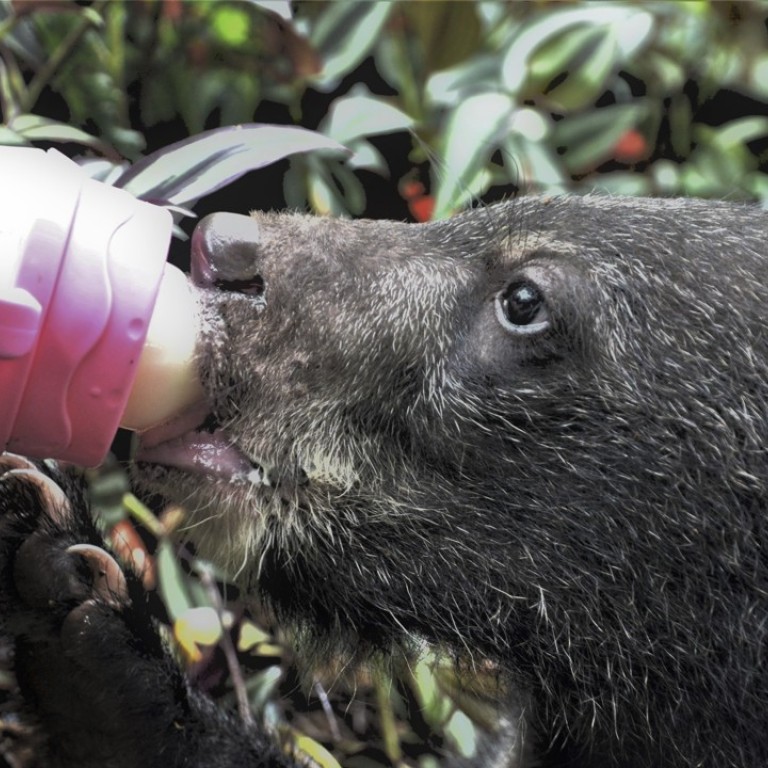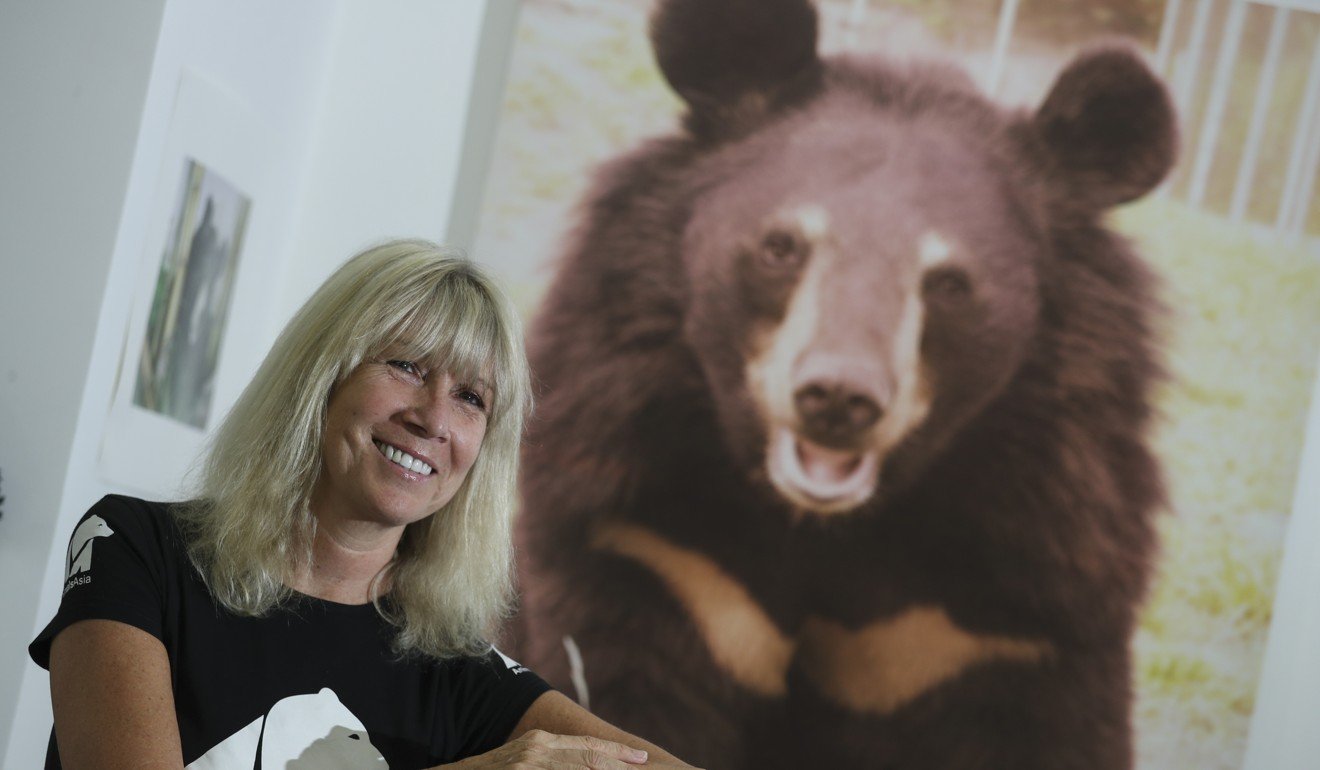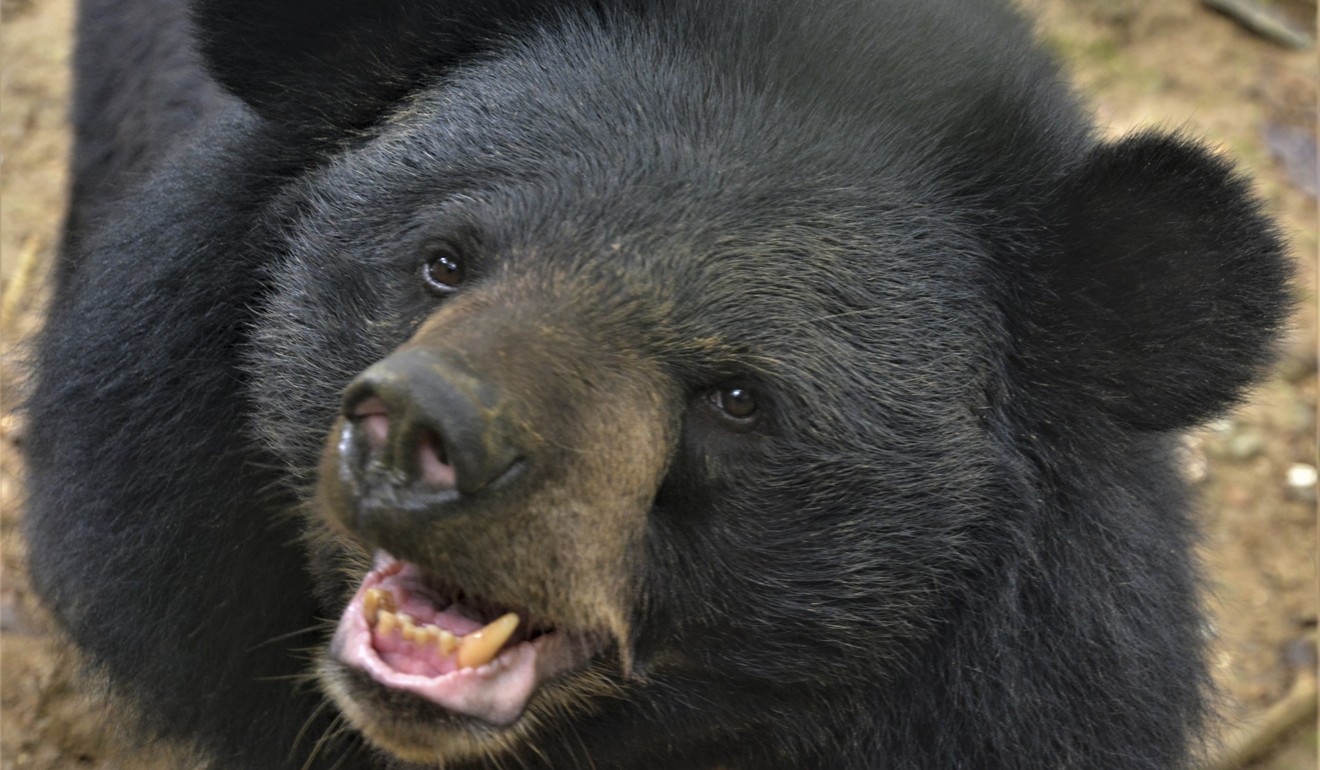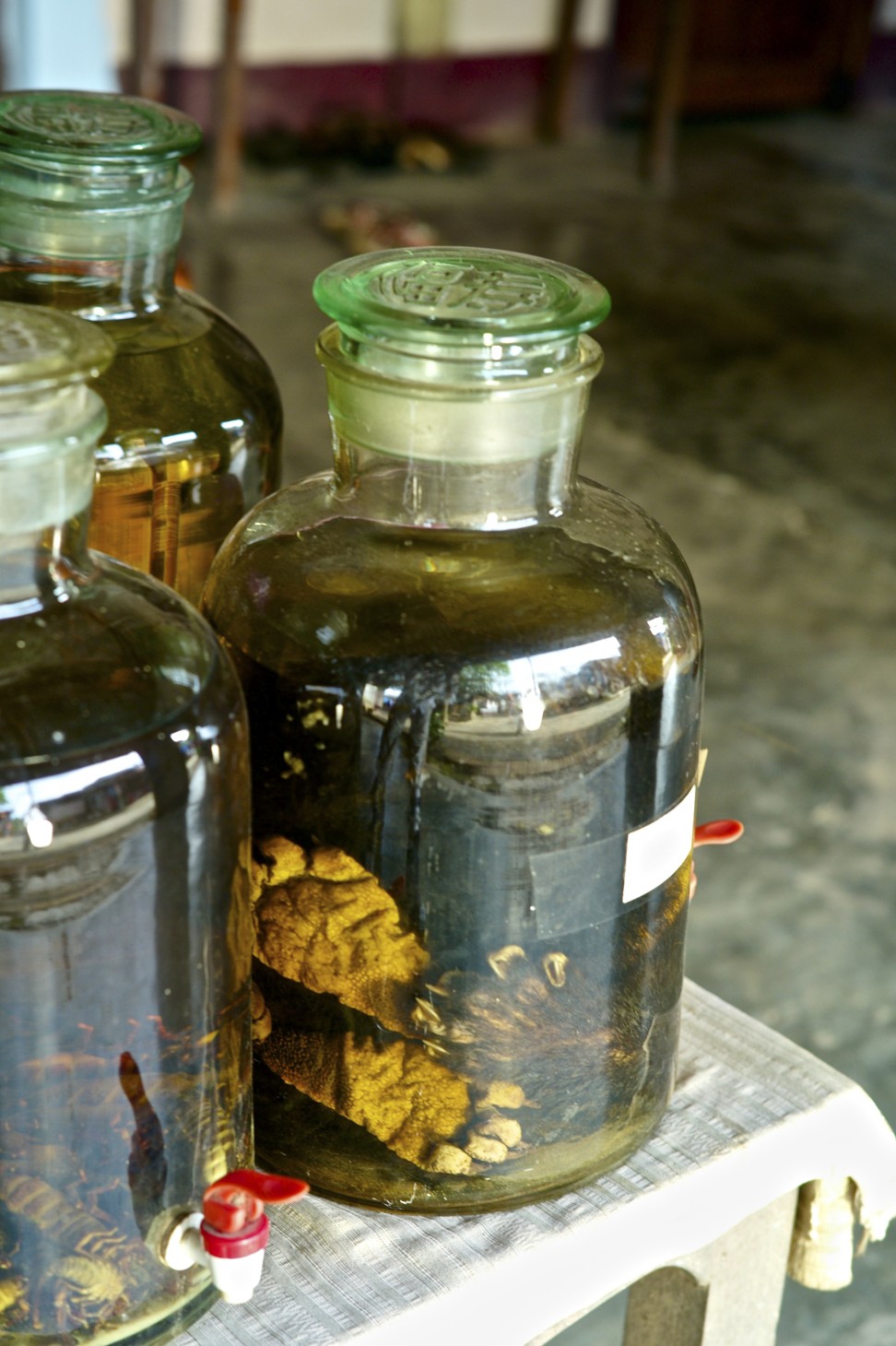
Free the Bears strengthens fight against bile trade with new Laos sanctuary for rescued moon bears
The sanctuary that will house up to 150 rescued bears is under construction in the hills outside Luang Prabang, the former capital of Laos, where the NGO saves bears from the pet trade and bear bile farms
Two Asiatic black bear cubs, barely a few weeks old, were recently put up for sale in the former Laotian capital, Luang Prabang. The twins had been taken from a forest in northern Laos where their mother was killed by poachers. The asking price for the tiny creatures was 15 million Lao kip (HK$14,000) – a small fortune in the impoverished communist nation.
No payment was ever made. Instead, following a tip-off, Free the Bears Fund alerted Laotian officials, who confiscated the animals.

“We received a call and moved fast,” recalls Luke Nicholson, a wildlife expert at the charity, registered in 1995 by Australian activist Mary Hutton. “They were the smallest cubs we’ve ever rescued in this country,” adds Nicholson, the non-profit’s programme manager in Laos. “They required round-the-clock care.”
Vietnam pledges to rescue 1,000 bears in bid to end bile trade
Two months on, the two cubs, named Beryl and Bertha, are living at a bear sanctuary run by the NGO just outside town. “Beryl is definitely the naughtier one,” Hunt says. “She’s just trouble – bitey and scratchy. She loves climbing to the top of trees and [she] stay there for ages.”

The two rescued cubs share the premises with 41 other Asiatic black bears, popularly known as “moon bears” because of the white, crescent-shaped marking on their chest. They’ve all been rescued from the exotic pet trade or from bear farms around Laos.
Had they not been rescued, the sisters would likely have wound up in some wealthy family’s backyard to serve as a source of amusement as living playthings. Within a year or two they’d have outgrown their cubbish “cuteness” and probably ended up spending the rest of their lives confined in small cages.
Hong Kong bile bear campaigner Jill Robinson’s story told on film
They might even have had catheters inserted into their gall bladders to drain their bile, which is widely prized as a panacea in traditional Chinese medicine.
At farms in Laos, hundreds of bears languish in appalling conditions. Kept in tiny “crush cages” that constrict freedom of movement, they’re fed scraps and gruel, a diet that makes them sickly and emaciated. Their bile is “milked” regularly, which causes them pain and trauma.

The Laotian government has pledged to close down such farms, following the example of Vietnam, which in July made bear farming illegal and pledged to rescue more than 1,000 of the animals estimated to be held in captivity.
The Vietnamese government also vowed to continue cooperating with NGOs, including Free the Bears and Hong Kong-based Animals Asia, led by founder Jill Robinson. Animals Asia has been fighting for a ban on bile farming since 1998 and runs sanctuaries in Vietnam and China.
Noy, a hulking bear whose Lao name means “small”, was brought to Free the Bears as a gaunt and stunted animal, barely alive after a long spell of neglect. He’s since turned into one of the largest, most imposing figures at the sanctuary. He shamelessly bosses other residents around – especially if they decide to hog his favourite hammock.

Kham, another rescued bear, is quite a looker with thick black fur. He loves corn and mostly keeps to himself. Damm and Kayasin are inseparable sisters. They enjoy snoozing on aerial platforms together and lounging by a pool. They also both have a sweet tooth for treats.
Some [bears] were kept in hotels and karaoke bars for entertainment, some at farms for bile extraction, [and] some in houses as pets.
“Moon bears are big, walloping lumps of cool,” Hunt says. “They’re pretty chilled out.”
Not so Beryl and Bertha, though. Bundles of energy, the two cubs scamper around in their enclosures, whimper to be fed, and nuzzle up to newcomers curiously. The rest of the time they frolic, gambol, wrestle, climb things, fall down – and carry on making mischief. The pair may never return to the wild, but they will be well cared for here.
Free the Bears also operates in Vietnam, Cambodia, Thailand and India in its quest to shut down the bear trade. It is currently building a new sanctuary on 24 hectares of rolling fields and woods, surrounded by towering cloud-topped peaks, 30 minutes’ drive from Luang Prabang.
Demonic possession in Laos - is it real, or a pretext for village chiefs to banish troublemakers and nonconformists?
The NGO started work in Laos in 2003 with three cubs confiscated from the wildlife trade. Two of them still live at its sanctuary. “The situation back then was very grim for bears,” Hunt says. “They were sold openly at markets. Some of them were kept in hotels and karaoke bars for entertainment, some at farms for bile extraction, [and] some in houses as pets.”

The charity has its work cut out. Many of the villagers living next to the new sanctuary still believe the digestive fluid of bears contains magical healing properties.
Some of these beliefs [in the potency of bear bile] are centuries old. I once met a villager who believed that bear bile could mend broken bones.
“I want to buy some bear bile for my mother,” says Thongdam Sysavath, 26, who lives in Ban Tin Pa. The small village lies right next to the new sanctuary, which could be home to as many as 150 bears once they are confiscated from bile extraction businesses around the country.
“She regularly has stomach cramps,” says Thongdam, who has a college degree in forestry and is the only villager who speaks English. He too believes in the curative properties of the substance. “Bear bile can help her. I hope I can get some from them [Free the Bears],” Thongdam adds, indicating he is unaware of the true purpose of the sanctuary, where he recently applied for a job.
Thongdam says he knows what goes on at bear farms but, like most hard-up locals in Laos, he takes a utilitarian approach: wild animals are just like domesticated animals in that they can be sources of food and medicine. “I feel sorry for cubs [if they’re abused at bear farms],” he concedes, “but older bears can take it.”
Can synthetic bile finally free the moon bears?
One morning, about two dozen people in his farming community huddled around a meal of chicken, pork and home-brewed rice whiskey, in a small hut with rattan mat walls. Wafts of burning incense hung in the muggy air. Leading the gathering in a chant was an elderly medicine man who wanted to placate the spirits that he believed had stricken a mother and her young daughter with malarial fever.

Despite his efforts, a few days later the mother and her daughter were still ill. What was needed to cure them, some of the villagers said, was a dose of bear bile. That was beyond their meagre financial means, even though the price of bear bile has been falling as a result of overproduction at farms in neighbouring China. According to a research centre under the China’s state council, as many as 20,000 bears are kept for such purposes.
“Some of these beliefs [in the potency of bear bile] are centuries old. They’re down to ignorance and very hard to eradicate,” Nicholson says. “I once met a villager who believed that bear bile could mend broken bones.”
You can meet such villagers in Ban Xang Hai, also known as “the whisky village”, outside Luang Prabang, where local vendors peddle rice whisky. Inside the bottles are various animals and animal parts: baby cobras, green snakes, giant black scorpions. They’re believed to gift curative properties to the alcoholic brew.
Also on offer occasionally are jars of “bear paw wine”, which is what its name suggests: fermenting rice wine with the mutilated paws of bears marinating in it.
Asiatic black bears once roamed far and wide in the area’s forests, before being seen only in cages or as body parts. Villagers in the hills admit they haven’t seen a wild bear in years during their foraging trips.
That’s probably a good thing for the last few bears that may linger in the forests. “A bear is very valuable [because of its gall bladder and other parts],” says a middle-aged man who lives in the hillside village of Xiang Mouarg. “If we saw a wild bear, some of us would go and kill it.”

